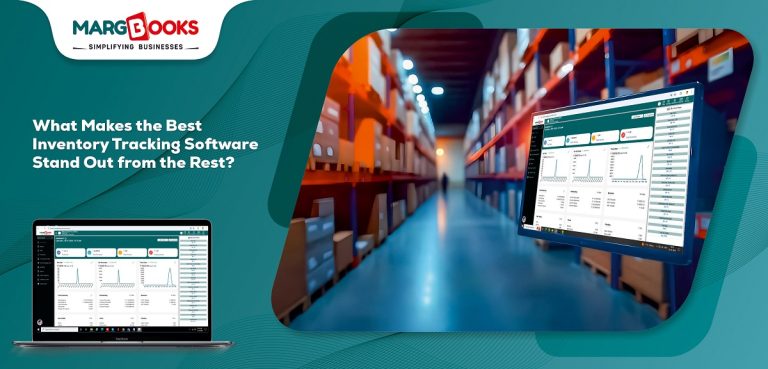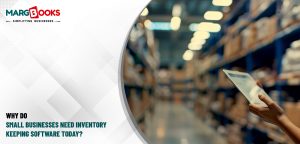Managing inventory effectively can make or break a business. Companies struggle with stock shortages, overstocking, and manual tracking errors that drain profits and frustrate customers. The right Inventory Tracking Software transforms these challenges into competitive advantages by providing clear visibility, automation, and control over stock levels across all business operations.
Why Inventory Visibility Matters?
Modern businesses cannot afford blind spots in their inventory management. When stock levels remain unclear, companies face costly consequences: lost sales from stockouts, excess capital tied up in overstock, and customer dissatisfaction from delayed orders. Real-time tracking eliminates these risks by providing instant updates whenever inventory moves through the system.
The most effective solutions update stock counts automatically across all sales channels, warehouses, and retail locations. This synchronization prevents overselling online while maintaining accurate records for physical stores. Companies using advanced tracking systems report 25% fewer stock discrepancies compared to manual methods.
How Leading Tools Reduce Manual Errors?
Manual inventory counting introduces human error at every step. Workers miscount items, enter wrong quantities, or forget to update records after transactions. Quality Inventory Tracking Software addresses these issues through barcode scanning, automated data entry, and real-time synchronization across all business systems.
Margbooks exemplifies this approach by connecting inventory updates directly with sales transactions, purchase orders, and warehouse movements. When a sale occurs, the system immediately adjusts stock levels without requiring manual intervention from staff members.
Integration with Other Business Functions
Effective inventory management doesn’t exist in isolation; it connects with every aspect of business operations. The most powerful tracking solutions serve as central hubs that communicate seamlessly with other critical business systems. These are as follows:
Accounting and ERP Integration
Standalone inventory systems create data silos that force businesses to enter information multiple times across different platforms. The best Inventory Tracking Software integrates seamlessly with accounting software, customer relationship management tools, and enterprise resource planning systems.
This integration ensures that inventory valuations automatically update financial reports, cost of goods sold calculations remain accurate, and purchasing decisions reflect current stock levels.
Companies save hours of manual data entry while reducing errors that occur when transferring information between systems.
Role of Billing Software for GST in Automation
Tax compliance adds complexity to inventory management, especially for businesses operating in multiple jurisdictions. Modern tracking systems work alongside billing software for GST to automatically calculate tax obligations based on inventory movements, sales locations, and product classifications. This automation reduces compliance risks while ensuring accurate tax reporting.
Smart businesses choose inventory solutions that handle GST calculations automatically, generate compliant invoices, and maintain detailed audit trails for tax authorities. This integration eliminates manual tax calculations and reduces the risk of costly compliance errors.
Scalability and Multi-location Support
Growing businesses need Inventory Tracking Software that scales without requiring complete system replacements. The most effective solutions accommodate everything from single-location startups to multi-warehouse enterprises operating across different countries.
Scalable systems maintain performance as transaction volumes increase, support unlimited product variations, and handle complex pricing structures without slowdowns. They also accommodate growing user bases while maintaining security and access controls appropriate for larger organizations.
Margbooks demonstrates this scalability by supporting businesses from the startup phase through rapid expansion, adapting to changing needs without forcing expensive migrations to new platforms.
Remote Access with Cloud Based POS Software Compatibility
Traditional inventory systems tied to specific computers or locations limit business flexibility. Modern solutions provide cloud based POS Software compatibility that enables real-time access from any device with internet connectivity. This flexibility proves essential for businesses with multiple locations, remote workers, or owners who travel frequently.
Cloud-based systems also ensure automatic backups, regular security updates, and reliable uptime without requiring internal IT expertise. Business owners can check inventory levels, approve purchase orders, and monitor stock movements from anywhere in the world.
How Margbooks Helps Businesses Transition Smoothly?
Switching inventory systems often disrupts business operations for weeks or months. It minimizes this disruption through careful data migration, extensive training programs, and ongoing support that ensures smooth transitions.
The implementation process includes data importing from existing systems, staff training on new workflows, and gradual rollout options that let businesses adapt at their own pace. This approach prevents the operational disruptions that plague many software transitions.
Making the Right Choice
Selecting the right Inventory Tracking Software requires careful evaluation of current needs, growth plans, and integration requirements. The best solutions combine real-time accuracy, seamless integrations, scalable architecture, and reliable support to create long-term value for growing businesses.
Companies that invest time in proper evaluation and choose solutions like Margbooks position themselves for sustainable growth while avoiding the costly mistakes that come from inadequate inventory management. With the right system in place, businesses gain the visibility and control needed to optimize inventory levels, reduce costs, and deliver exceptional customer experiences.




